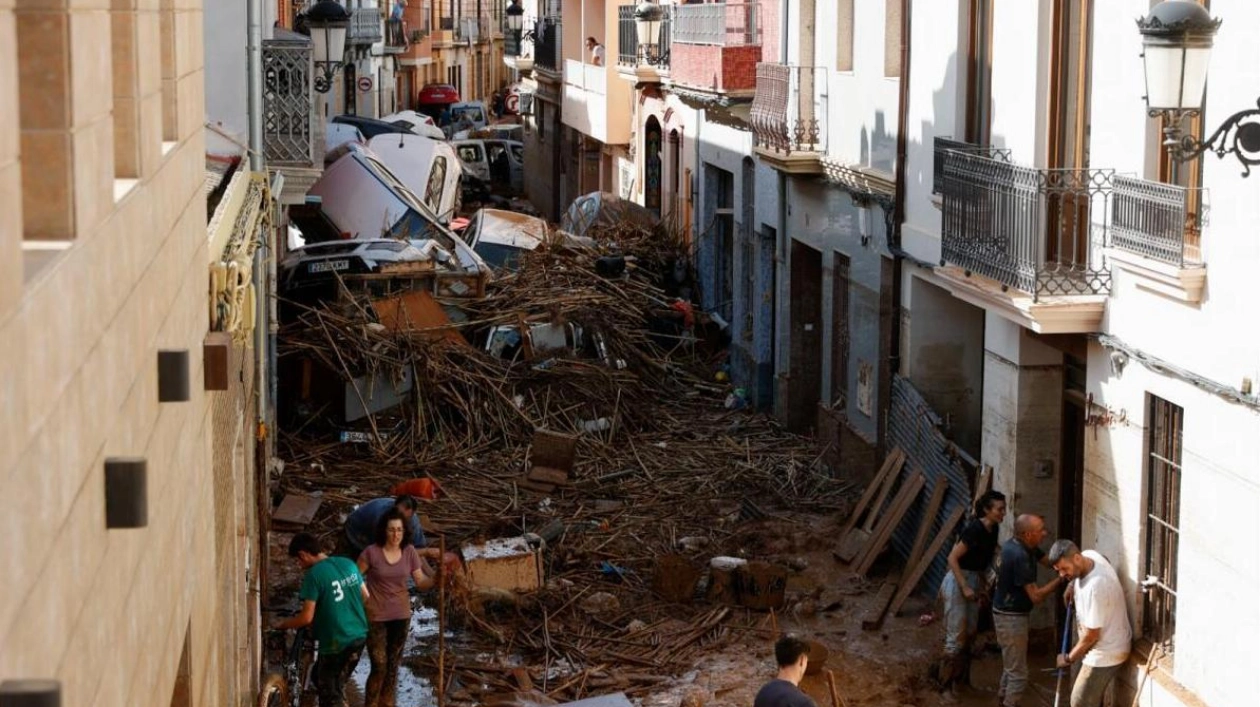Powerful storms, fueled by a warming planet, poor urban planning, and human carelessness, have led to catastrophic consequences in Spain's deadliest floods in a generation, experts told AFP.
Authorities in the European country have reported a provisional death toll of 158, with fears that the number could rise as rescuers continue to search for bodies buried under rubble and mud. Torrential rains inundated parts of the eastern Valencia region, receiving a year's worth of precipitation in just a few hours, according to the national weather service AEMET. In Chiva, west of the coastal city of Valencia, 491 liters of rain per square meter (49.1 centimeters) were recorded.
The deluge was attributed to a seasonal storm phenomenon where cold air moves over the warm waters of the Mediterranean Sea, forming intense rain clouds. Scientists argue that human-driven climate change is raising the temperatures of the world's waters, intensifying the ferocity of storms. The warmer Mediterranean and the time of year acted as a catalyst for the torrential rains, creating a 'dramatic' cocktail of climate change, according to Jorge Olcina, a climate expert at Alicante University.
When storms reach such levels, they can exhibit effects similar to 'hurricanes' or 'tropical cyclones,' Olcina added in an audio message to AFP. The parched soil in the hardest-hit areas exacerbated the problem after Spain endured two consecutive years of intense droughts. The ground could not absorb the massive amount of water, leading to flash flooding that swept through settlements.
The Valencia region is also characterized by many areas where natural spaces have been replaced by impermeable concrete. This urban development is 'uncontrolled and ill-adapted to the natural characteristics of the territory,' amplifying the danger of powerful storms, according to Pablo Aznar of the Socioeconomic Observatory of Floods and Droughts. The population density of the Valencia region, which hosts Spain's third-largest city with almost 1.9 million inhabitants, also played a significant role.
Population density 'was a very important factor' and posed a 'challenge' to the authorities, said Aznar. The timing of the storm was particularly unfortunate, occurring late on Tuesday when motorists were on the roads during the evening rush hour. Many victims were caught off guard in their vehicles as they returned home or were on the street, with raging waters forcing some to cling to lampposts or trees.
Such scenes could have been avoided if citizens had been warned in time to seek shelter at home, according to Hannah Cloke, a hydrology professor at Britain's University of Reading. AEMET had issued a red warning for the Valencia region on Tuesday morning, but the civil protection service only sent its telephone alerts advising people not to leave home after 8:00 PM (1900 GMT). However, some people admitted they left home even after receiving the alert, indicating a poor understanding of the emergency.
While there were 'communication failures,' the responsibility is shared because Spain lacks a 'culture of risk,' Aznar told AFP. 'Our collective mentality is still not sufficiently adapted to new extreme weather phenomena.' Olcina concurred, emphasizing the need for vastly improved risk education in schools and among the general population to ensure people know how to act in the event of an immediate risk.
Source link: https://www.khaleejtimes.com






